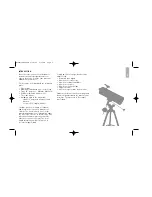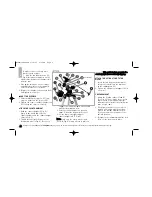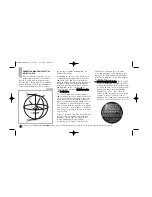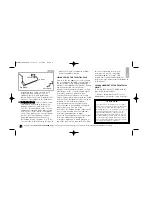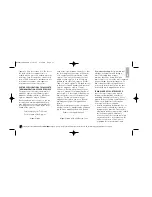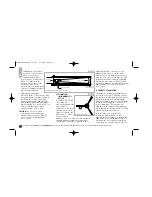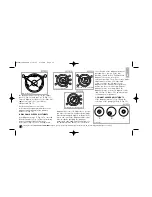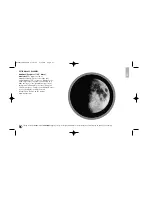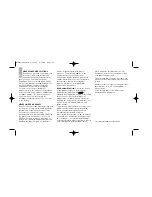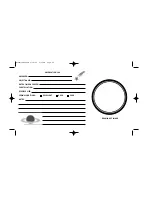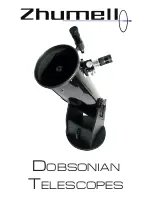
24 primary lines of R.A., located at 15-
degree intervals along the celestial
equator. Objects located further and
further East of the zero R.A. grid line (0hr
0min 0sec) carry higher R.A. coordinates.
•
• D
De
ec
clliin
na
attiio
on
n ((D
De
ec
c..)):: This celestial version
of latitude is measured in degrees, arc-
minutes, and arc-seconds (e.g., 15
°
27'
33"). Dec. locations North of the celestial
equator are indicated with a plus (+) sign
(e.g., the Dec. of the North celestial pole
is +90
°
). Any point on the celestial equator
(such as thee constellations of Orion,
Virgo, and Aquarius) is said to have a
Declination of zero, shown as 0
°
0' 0". All
celestial objects therefore may be located
with their celestial coordinates of Right
Ascension and Declination.
LINING UP WITH THE CELESTIAL POLE
Objects in the sky appear to revolve around
the celestial pole. (Actually, celestial objects
are essentially "fixed" and their apparent
motion is caused by Earth's rotation). During
any 24 hour period, stars make one
complete revolution about the pole, circling
with the pole at the center. By lining up the
telescope's polar axis with the North
Celestial Pole (or for observers located in
Earth's Southern Hemisphere with the South
Celestial Pole), astronomical objects may be
followed, or "tracked," by moving the
telescope about one axis, the polar axis.
If the telescope is reasonably well aligned
with the pole very little use of the
telescope's Declination flexible cable control
is necessary. Virtually all of the required
telescope tracking will be in Right
Ascension. For the purposes of casual visual
telescopic observations, lining up the
telescope's polar axis to within a degree or
two of the pole is more than sufficient: with
this level of pointing accuracy, the
telescope can track accurately by
slowly turning the telescope's R.A.
flexible cable control and keep objects
in the telescopic field of view for perhaps 20
to 30 minutes.
POLAR ALIGNMENT OF THE EQUATORIAL
MOUNT
To line up the Polaris 114 EQ-AR with the
pole, follow this procedure:
1. Release the Azimuth lock (11) of the
Azimuth base, so that the entire telescope-
7
Fig. 7
Polaris
Little Dipper
Big Dipper
Cassiopeia
TOO MUCH POWER?
Can you ever have too much power? If the type of
power you’re referring to is eyepiece magnification,
yes you can! The most common mistake of the
beginning observer is to “overpower” a telescope by
using high magnifications which the telescope’s
aperture and atmospheric conditions cannot
reasonably support. Keep in mind that a smaller,
but bright and well-resolved image is far superior
to one that is larger, but dim and poorly resolved.
Powers above 400x should be employed only under
the steadiest atmospheric conditions.
Looking at or near the
Sun
will cause
irreversible
damage to your eye. Do not point this telescope at or near the Sun. Do not look through the telescope as it is moving.
Meade114EQASTR 3/28/07 9:33 AM Page 9



